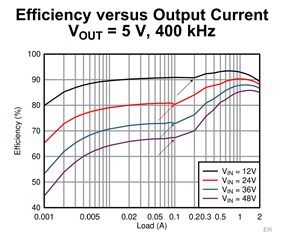Hello Support team,
My customer ask the questions. Could you support?
*Does low side current limit occur after high side current limit hit? Or low side current limit can work without high side current limit hit?
As example, in case IOUT:2A and ILripple : 0.2A, this never hit ISC threshold, but, ILS_LIMIT is min 1.8A, does low side FET keep on until inductor current reach to 1.8A?
*How does LMR36520 change the mode from PFM to PWM and from PWM to PFM? zero cross detector threshold IL_ZC 0.04A?
Thanks,
Koji Ikeda


